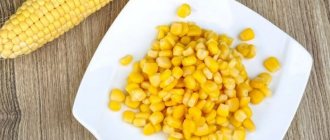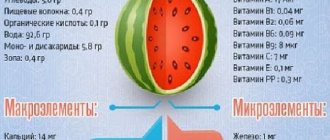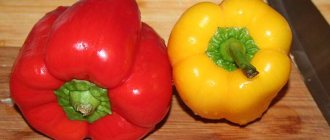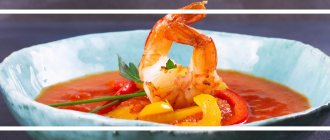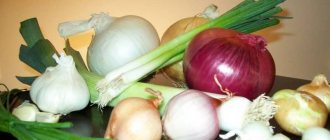Corn serves as the basis for many foods.
These are grains, cereals, flour and oil. Vinegar, alcoholic drinks, and confectionery products (jams, jellies, marmalade) are produced from corn starch. Boiled corn is a favorite delicacy for many that can benefit the body if used correctly. However, for patients with gastritis it can pose a certain danger and should not be consumed in large quantities.
Is it possible to eat corn if you have gastritis?
Gastritis affects more than half of the world's population. The list of main causes of the disease includes the bacterium Helicobacter pylori, which actively multiplies in the body against the background of poor nutrition and destructive habits (alcohol, smoking). Experts prescribe complex therapy for the disease. Along with taking medications, it is important to follow a diet, loosening it as symptoms decrease.
The main question that arises in the head when diagnosing gastritis and prescribing a diet plan is what can you eat now, and what will you have to give up?
Regarding corn, doctors give a clear answer: when the symptoms subside and the disease goes into remission, you can eat boiled corn, corn porridge and pureed soups. In the acute phase, the product is prohibited.
Positive and negative properties of corn
Benefits of corn for the human body:
- Contains a large amount of fiber, which regulates intestinal function, accelerating the elimination of waste, poisons and toxins.
- Carotenoids increase visual acuity.
- Potassium and magnesium ensure stable functioning of the heart muscle and prevent the development of vascular pathologies and cardiac diseases.
- B vitamins calm the central nervous system, preventing neuroses and depression, and help cope with everyday stress and mental overload.
- Nutrients in corn kernels reduce the risk of putrefactive processes in the gastrointestinal tract.
- Selenium and vitamin E are antioxidants. They reduce the likelihood of the formation of malignant tumors and slow down the aging of the body at the cellular level.
- Boiled corn has a mild laxative effect on the intestines.
- Mineral compounds are useful for women: they reduce the unpleasant symptoms of menopause and restore hormone levels.
- Men will appreciate the beneficial effects of corn on sexual function.
- Masks made from grains are used in cosmetology to make whitening masks.
- The product contains a lot of protein, without which tissue regeneration at the cellular level is impossible. How does it work for gastritis? During an exacerbation of the condition, the walls of the stomach are destroyed, and it is the protein that helps the tissues recover faster when switching to a gentle diet.
But no matter what benefits corn brings to the body, we should not forget about the potential harm:
- With individual intolerance, allergic reactions occur.
- Excessive consumption causes flatulence and diarrhea.
- Corn is contraindicated for ulcers and erosions of the gastrointestinal tract, stagnation of venous blood and a tendency to thrombus formation.
Precautionary measures
Doctors recommend including corn in the diet in limited quantities for chronic gastritis and listening to the body’s reaction. With this disease, you can eat pureed soups or baked young cobs. It is advisable to completely exclude canned grains seasoned with a large number of preservatives, as well as popcorn, since it contains coarse fiber that injures the walls of the stomach.
Due to the high calorie content, it is advisable to reduce consumption of the product if you are obese.
Attention! It is worth refraining from corn in the first months of lactation. In the future, you are allowed to eat no more than two cobs per week. The product can cause colic and bloating in the baby.
Energy value
The calorie content of canned cereal in 100 grams is about 60 kcal. This figure may fluctuate, since the concentration of sugar in raw materials is not constant. The highest energy value reaches up to 120 kcal.
100 grams of cereal contains:
- carbohydrates – 75%;
- proteins – 8%;
- fats – 1%.
Heat-treated products are considered less healthy than raw ones. But the same cannot be said about corn. Canned cereal has less calories, but the concentration of nutrients in it remains virtually unchanged. Therefore, this ingredient is often present in the diet of those losing weight and those actively involved in sports.
How to cook corn for gastritis
Patients suffering from gastritis in remission can eat pureed soups, porridge with water, boiled or steamed corn. All dishes must be warm. Hot and cold foods are contraindicated in this condition because they irritate the stomach walls.
Cooking corn cobs correctly
Rules for cooking corn:
- Choose young cobs with soft, juicy kernels. Remove leaves and fibers.
- Place the corn in a large saucepan and cover with clean, cold water. Don't add salt.
- The cooking time for young cobs is 20-30 minutes. Boil more mature specimens for at least two hours, tasting the grains.
- Drain the water and cover the pan with a towel. The cobs will be fully cooked and the grains will become soft.
Advice. Season the corn with butter and a little salt.
Steaming corn
This method of processing corn cobs helps preserve maximum beneficial properties. The product turns out juicy and aromatic.
The fastest way to cook steamed corn is in a slow cooker. To do this, pour water into the bowl to the maximum level, place the cobs in a special extension, and cover the top with leaves to create high steam pressure. Set the “steam” mode, cooking time 15 minutes. To improve the taste, season with olive oil.
Corn porridge
For gastritis, corn grits porridge is boiled in water, adding a little salt. During the period of remission, you can add a little milk and butter.
To cook delicious corn porridge, follow the proportions. For 1 cup of cereal, take 4 cups of water. First, boil water with salt, use a whisk or wooden spoon to make a whirlpool and pour the washed cereal in the center. Mix quickly, breaking up any lumps. Turn the heat to low and simmer for at least 30 minutes, stirring constantly. Add a piece of butter to the finished porridge.
Creamy corn soup
To cook a delicious soup, prepare the following ingredients:
- onion – 1 pc.;
- carrots – 2 pcs.;
- butter – 50 g;
- extra virgin olive oil – 2 tbsp., l.;
- half a glass of cream 10%;
- low-fat chicken broth - 1 l;
- corn grains - 1 cup.
Preparation:
- Finely chop the peeled onion, grate the carrots on a medium grater and sauté in olive oil until soft.
- Pour broth into a saucepan, heat and add cream. Let it boil, add the sautéed vegetables and corn.
- Cook until tender and use a blender to puree the mixture. Salt before serving.
Reference. The creamy consistency of the soup envelops the walls of the stomach, prevents irritation and promotes rapid tissue regeneration.
Cooking corn cobs correctly
Young food grade corn cooks very quickly. The heads of cabbage are cleaned of leaves and stigmas. If desired, you can put some of the freshest green leaves and hairs on the bottom of an ordinary saucepan, multicooker bowl or double boiler, lay out the cobs, and if necessary, break them in half. You should not add salt during cooking, as this will make the grains softer. For food grades, 20-25 minutes of cooking after boiling water is enough. The finished corn should be allowed to cool slightly, sprinkle with salt or lightly grease with butter.
Gastritis is not a contraindication to eating boiled cobs, but it is important to observe moderation and chew the grains thoroughly.
Boiled corn for ulcers and other gastrointestinal pathologies
Gastroenterologists say that boiled corn can and even should be consumed for ulcerative lesions of the gastrointestinal tract, but only in the remission stage.
As the condition improves, some forbidden foods, including corn, are gradually returned to the diet. Since a gentle diet for stomach ulcers involves reducing meat consumption, corn will help replenish the lack of proteins, vitamins and minerals in the body.
Most often, the menu includes puree soups and porridge, which envelop the walls of the stomach and help restore the mucous membrane.
In case of reflux in the acute phase, doctors prohibit eating corn, since coarse fiber provokes the return of food from the stomach to the esophagus, causing heartburn.
As for pancreatitis (inflammation of the pancreas), in this case the rules for consuming corn are the same, as for other pathologies of the digestive system. The product can be introduced into the diet only after complete recovery or the disease has entered the remission stage.
Boiled vegetable - is it possible or not?
This dish is strictly contraindicated for any form of inflammation of the stomach in the acute stage.
Plant fibers are difficult to digest and can mechanically injure the inflamed mucous membrane. Corn stimulates the motility of the digestive tract, and the stomach in the acute stage of the disease needs maximum rest.
Since corn has virtually no effect on the acidity of gastric contents, limiting its use for gastritis does not depend on the production of hydrochloric acid. In hyperacid and hypoacid forms, boiled corn in small quantities is allowed during the period of stable remission. The plant must be ripe and young. Old, hard grains are more difficult to digest and can provoke fermentation processes in the stomach and worsen the disease.
Reference. At the pharmacy you can buy a herbal medicine made from corn columns with stigmas. Based on it, a decoction is prepared that is used to treat edema and diseases of the biliary tract. For gastritis, the product is not used.
For erosive and atrophic gastritis, boiled corn should not be consumed. Coarse fiber can cause mechanical injury to the atrophied mucous membrane, and in conditions of insufficiency of digestive enzymes, remain undigested in the stomach for a long time. All this leads to pain, discomfort, heaviness in the upper abdomen. In addition, the product slows down the healing of erosions due to too active stimulation of gastric motility.
